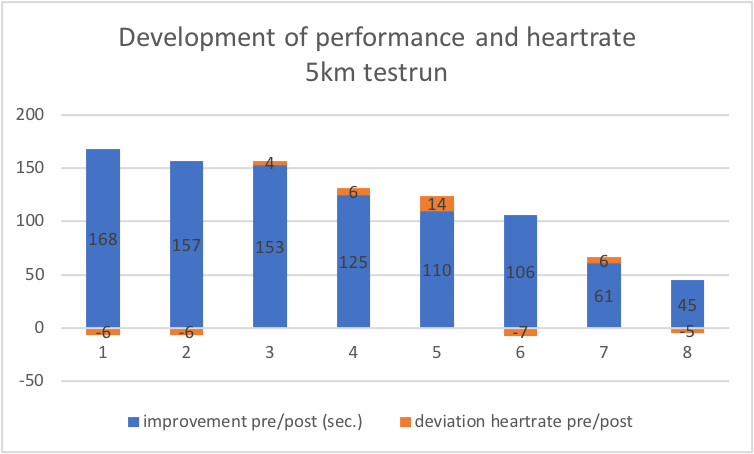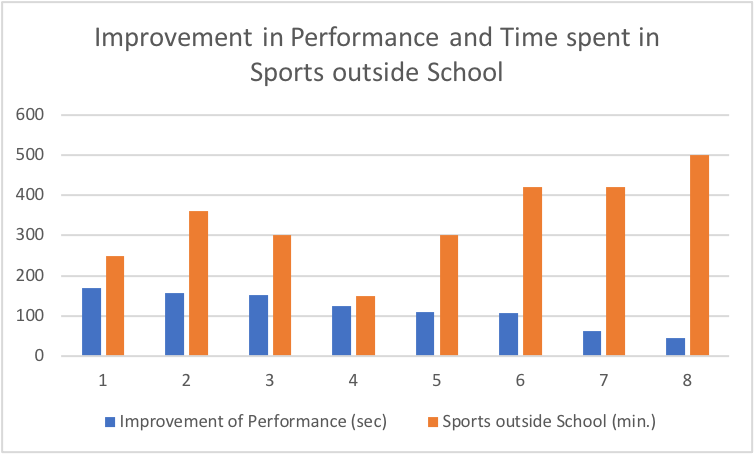HIT-Running 2
Based on the evidence of last year (see ‘HIT running’), some improvements were made and tested:
- Total training interval was raised from 8 to 10 weeks to enable longer recovery times
- HIT training during lessons were chosen with more progressive effort
- All trainings could be mutually monitored by all participants online
- All students wrote a report on their training and result
- Before and after the intervention, performance was measured by a 5km run (individual time correlated with heartrate).
- Final run was a 10km competition
- The key messages of HIT Running (see there) underwent a closer observation: sports activities outside school, commitment to training, motivation
Average running time in the first 5km run was 27’00’’, in the second 25’09’’. Compared to last year, all students improved considerably (from 2.9% resp. 45 sec. to 9.9% resp. 2 min. 48 sec.).
Average heartrate during the 2 runs remained the same (average of all participants +0.75 heartbeats, individual deviation in the second run from +14 to -7). This leads to the conclusion that, overall, improvements are based on better physical performance, not on motivation.

Conclusions
The significant improvement in performance may be explained by several reasons:
-more liability in training by mutual monitoring in a digital community
-better scheduling of training, considering individual heartrate, individual fitness and time and effort spent in other sports.
-small (8 students) and homogeneous group with high commitment to training
Longer timespan (10 instead of 8 weeks) which was a benefit for recovery and adaption
-better long term integration of HIT-sessions into the project.
Based on the individual profile of students, the main hypothesis of last year can be confirmed: Students who are highly committed to their fitness but are neither experienced runners nor spend a lot of time in sports outside school benefit the most. As a tendency, a smaller effect can be observed by students that spend more time in sports outside school. This may be explained by less time for specific running training and an already higher level of fitness.

- The main observation of ‘HIT running’ (see there) could be confirmed: Students who are highly committed to their fitness but are neither experienced runners nor spend a lot of time in sports outside school benefit the most
- 10 weeks of training have been much more effective than 8
- Mutual monitoring in a digital community had a positive effect on liability in training
